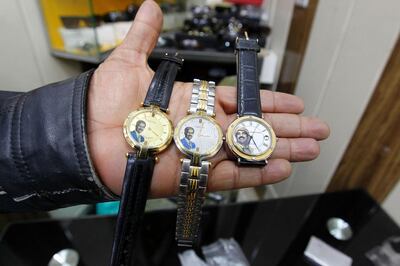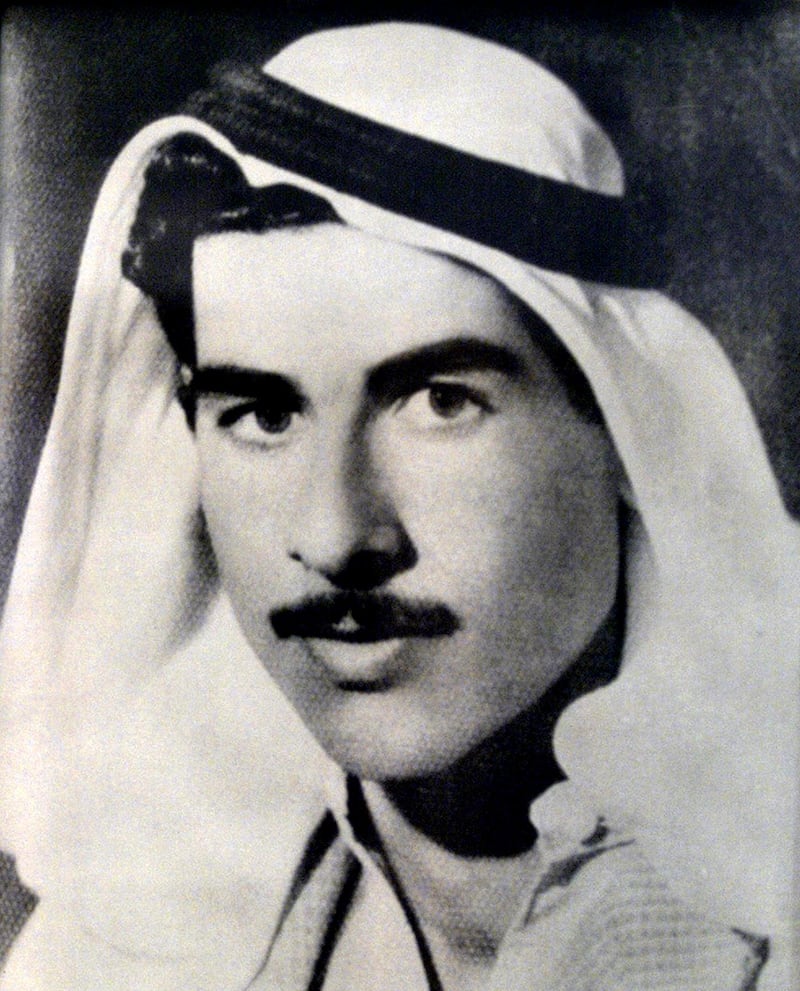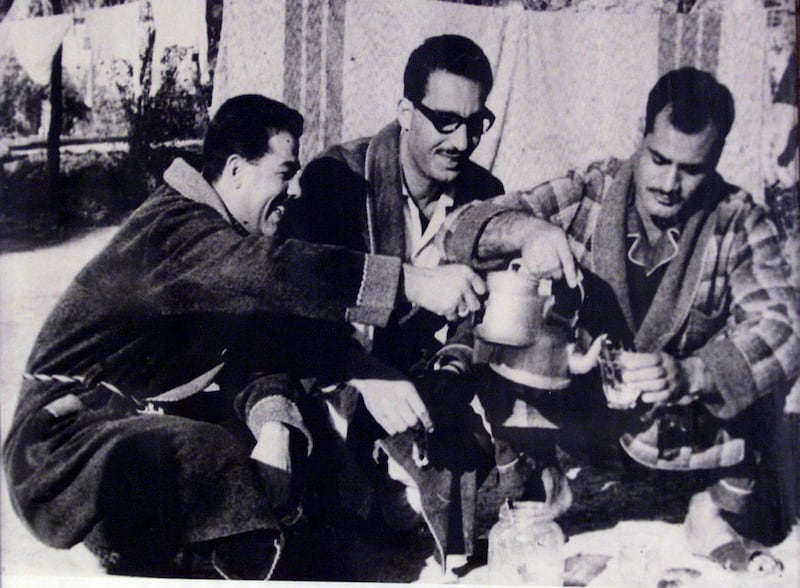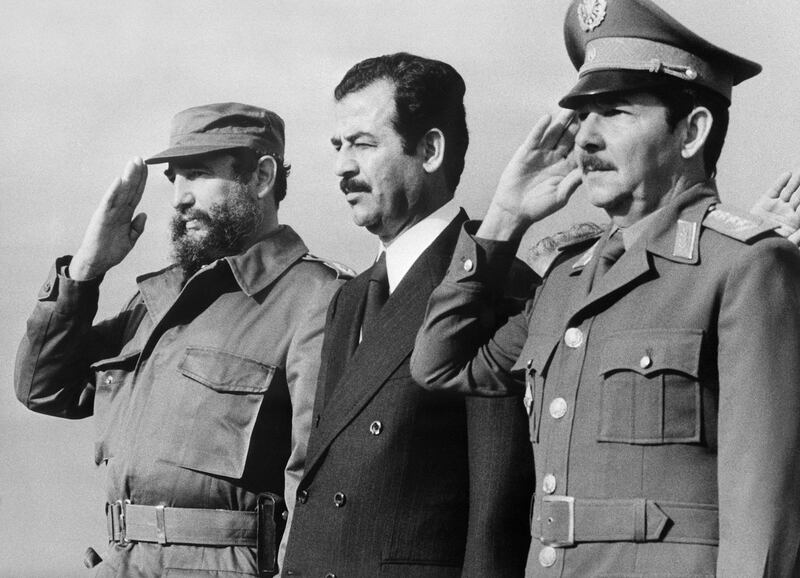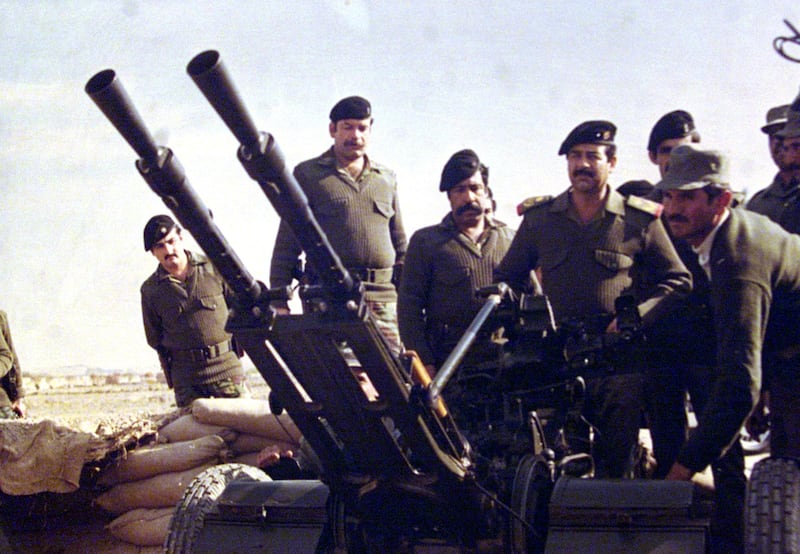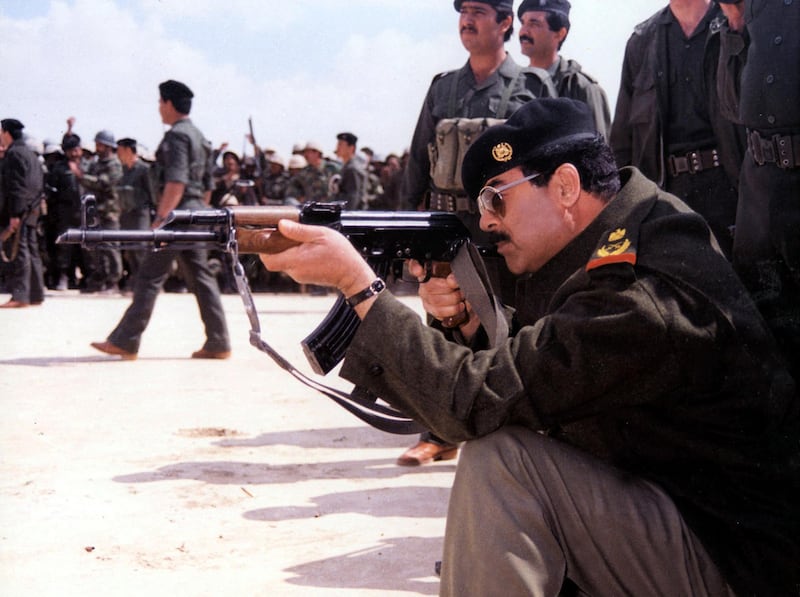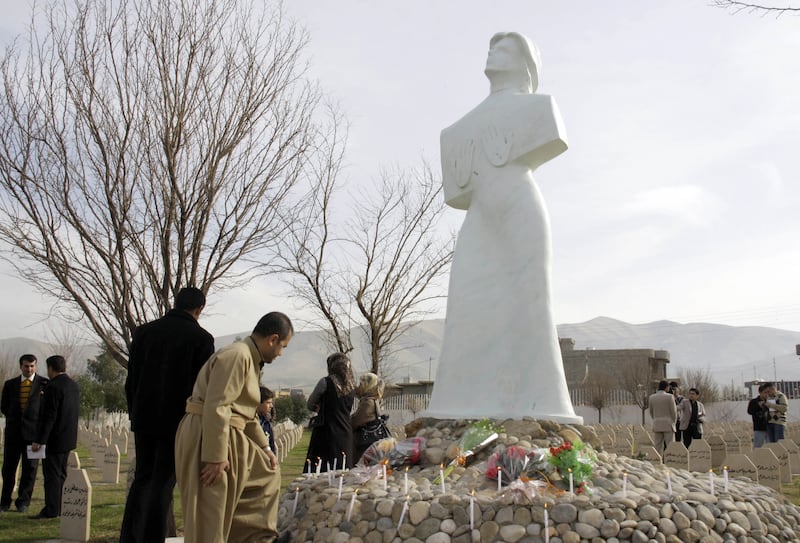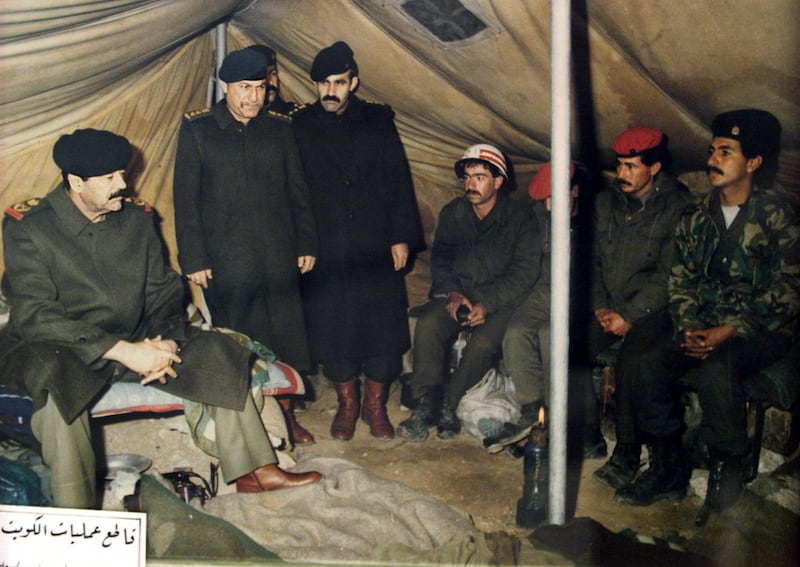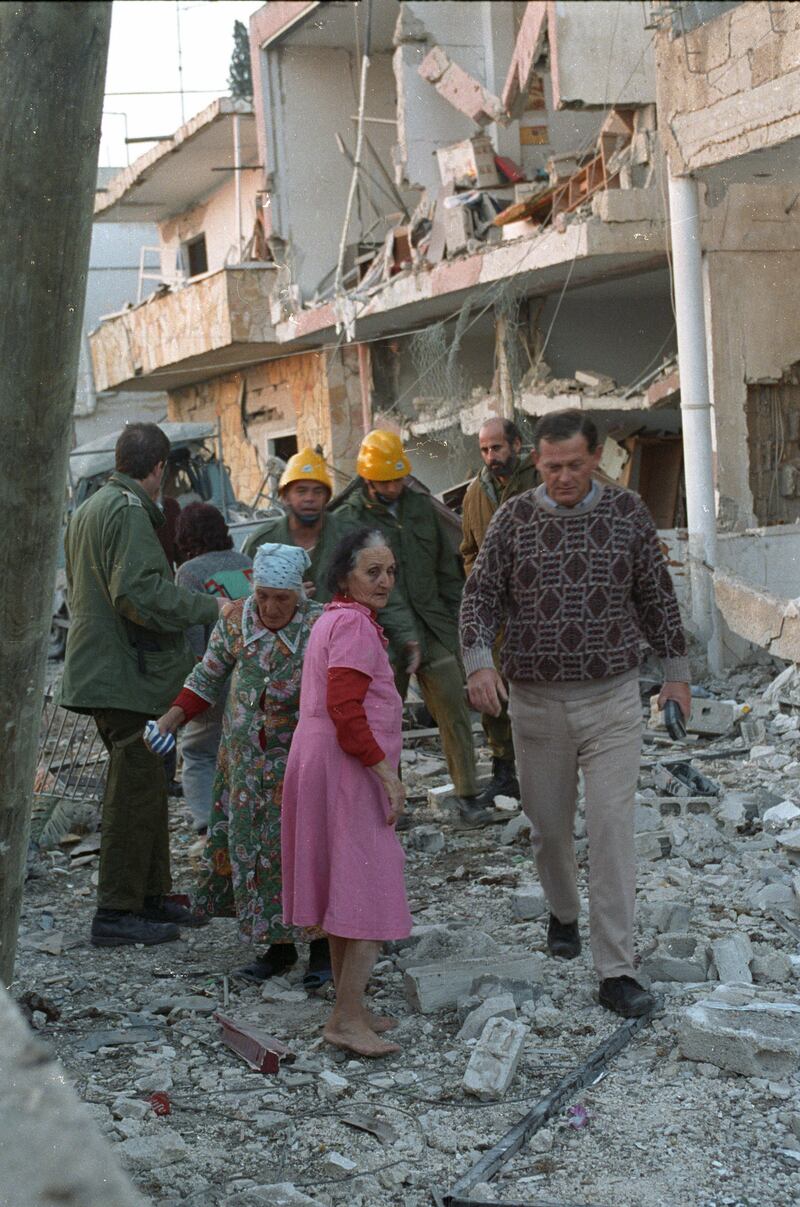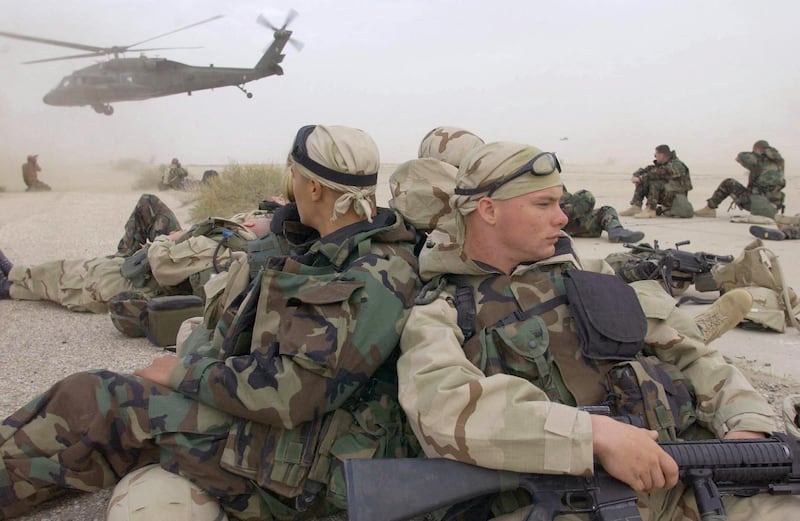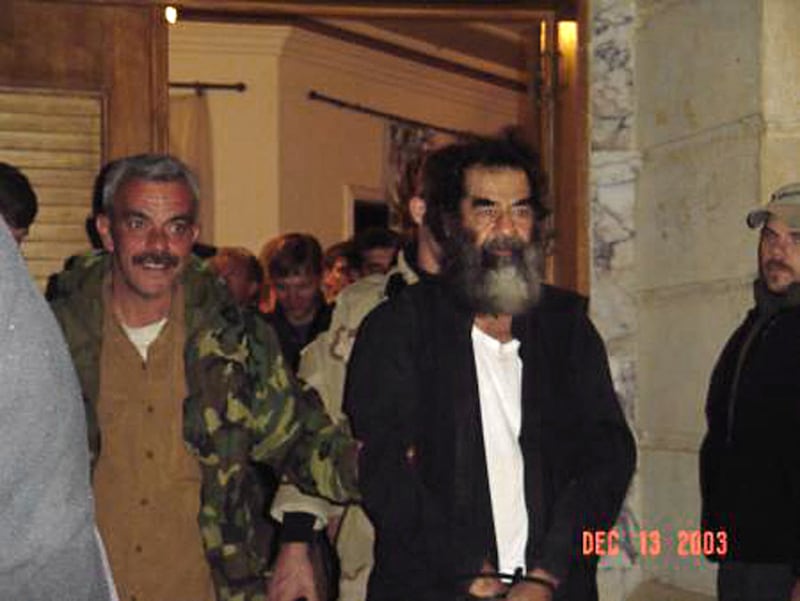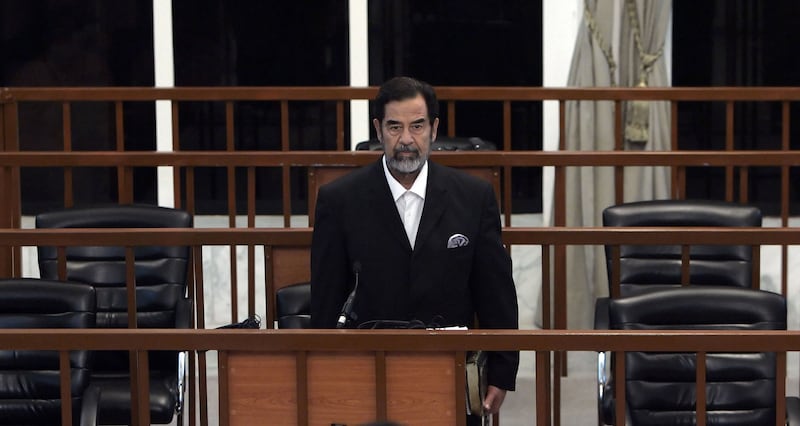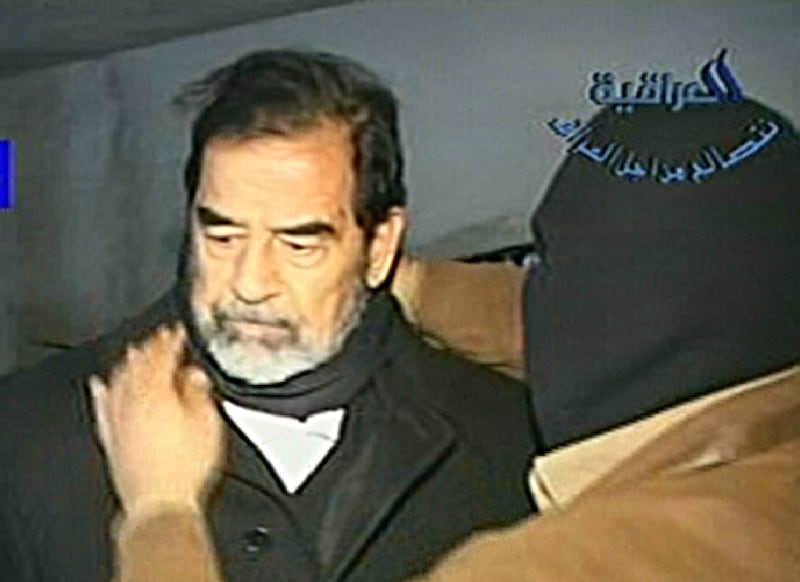Old Iraqi banknotes bearing Saddam Hussein's image lie in a tray on the floor of dusty souvenir shop in downtown Amman.
The shop’s owner says the notes are bought mostly by tourists.
“Some Arab visitors buy them,” he says. “Saddam was his own man.”
Thursday marks 15 years since Saddam Hussein's execution in Baghdad yet the memory of the dictator lives on.
Posters, key-rings and stickers of him abounded in Jordan when he lived and, while the shop is about the only one left downtown that sells memorabilia of him, images of Saddam can still be found on the backs of some lorries and taxis, or spray-painted on the walls of a few of Amman's streets today.
An Instagram account, dedicated to finding his likeness in public spaces, was created in 2019 — and remains active.
Convicted of killing 148 people by an Iraqi court, Saddam was hanged in the Iraqi capital on December 30, 2006, the first day of Eid Al Adha. Traditionally, executions are halted in Eid, however, a leaked video showed a small group jeering as the former dictator met his end.
Much has since changed across the Middle East. There has been the massive upheaval of the 2010-2011 Arab uprisings, regional fragmentation and the rise of religious groups — all of which have tempered support for political change.
But Saddam's complicated legacy endures, sustained by the Middle East’s deepening schisms and the perceived expansion of Iranian influence. Animosity towards the US and Israel in Jordan prompts some to mourn the loss of a strongman who presented an image of resisting the two countries.
During his rule, Saddam exploited these different political currents to enhance his pan-Arab image.
Saddam's reign of terror
Although some may look back at Saddam's rule with what could be called authoritarian nostalgia, his reign was underpinned by terror. He was responsible for countless executions and had a zero-tolerance policy for dissent. His forces gassed the Kurdish-Iraqi city of Halabja in 1988 and, after he fell in 2003, mass graves were found in southern Iraq.
Even his own family was not safe from his wrath. In 1996, his two defector sons-in-law were killed by loyalists when they returned to Iraq from Jordan, even though Saddam had promised them safety.
In 1991, he crushed an uprising in southern Iraq, killing tens of thousands of people, calling it ghawgha (mob rule).
The UN imposed comprehensive economic sanctions on Iraq for 13 years, following the invasion of Kuwait, but it was the 2003 US-led invasion that eventually toppled Saddam. The end of his rule led to further instability.
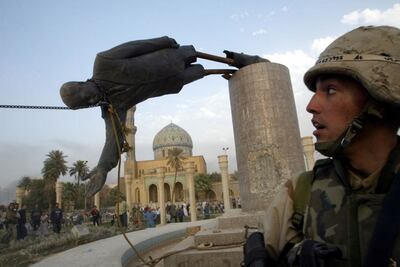
Saddam did not have the guile to avoid wars he was sure to lose, unlike his main Arab rival, Hafez Al Assad of Syria, who — alone among Arab leaders — supported Iran in the war with Iraq.
He refused to comply with a UN resolution demanding the immediate and unconditional Iraqi withdrawal from Kuwait in 1991. He claimed that any pull-out from Kuwait would be conditioned on ending the occupation of Palestine, the withdrawal of all foreign troops from the region and ensuring the Middle East was a region cleared of weapons of mass destruction.
It was through such actions that Saddam maintained a macho image that resonates in Jordan and beyond — his bloody history notwithstanding.
How is Saddam perceived in Jordan today?
Munther, a private doctor in Amman who declined to give his second name, recalls how he bought models of Scud missiles and Saddam key-rings in the run-up to the Gulf War.
“I was in university. I registered for civil defence courses. We thought war between Saddam and Israel was imminent and that Jordan was going to be the battlefield,” he says.
The war quickly became a rout. Saddam’s Scud attacks on Israel were an attempt to split Arab governments in the international coalition against him, and rally Arab populations.
There was no confrontation with Israel. But the doctor says Saddam was “a real leader".
“Look at those who have ruled Iraq after him,” he says.
Both Saddam and Assad had no qualms about killing their own people to crush any opposition.
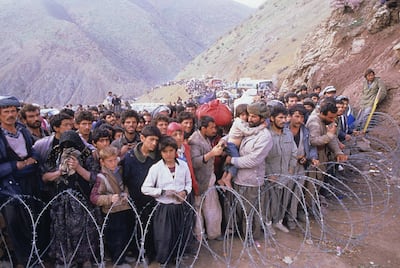
Saddam's opposition to Iran
Fadi Ahmar, a professor in geopolitics at the Lebanese University, says — regardless of who was to blame for the Iran-Iraq war — Saddam perceived early on a crucial Iranian threat.
Arab countries are devoting huge resources to counter much of the same threat today, Prof Ahmar says.
“Iran’s project was maximal and ideological from the beginning, and Saddam was aware of that.”
Prof Ahmar, who is based in Beirut, says Ayatollah Ruhollah Khomeini developed his Shiite political theories while in a 13-year exile in Iraq. Saddam expelled him in 1978.
In Najaf in the 1960s, Khomeini gave a lecture that laid the foundations of velayat-e faqih, or rule of the jurist. This is a doctrine which asserts that a senior Shiite cleric can be a country's absolute legal authority. This has been the cornerstone of Iran's ideological structure since the 1979 revolution.
A year after Saddam was toppled, Jordan’s King Abdullah II warned against an expanding “Shiite crescent”, with Iran becoming the dominant player in Baghdad, Damascus and Beirut.
Jordan benefited significantly during the war, as it became a main supply route to Iraq — a role the country also played throughout the UN sanctions.
Jordanian professor Hasan Al Momani says the expansion of Iran helped carve “a place for Saddam in Arab collective memory”.
Prof Al Momani, who teaches international relations at the University of Jordan, says Saddam came to be widely seen as having had “the right vision about Iran”.
But he cautions that social and psychological factors also contribute to an Arab affinity for Saddam, which should be examined.
“Among the people who demand freedom and marched in the streets, there is still a part of them who are pro-Saddam,” Prof Al Momani says.
“In many Arab states, he is looked upon as a symbol of bravery, and many believe he is better than the breakdown after him.”
But the perceived stability under Saddam was costly.
At the downtown shop that sells Saddam's dinars, the best-selling banknote is for 25 dinars. It became almost worthless after the UN imposed sanctions on Iraq for Saddam's invasion of Kuwait.
The 25-dinar banknote sunk to the equivalent to one cent, compared to $75 before Saddam's disastrous invasion of his neighbour.
The same money is exchanged for 17 cents today.
